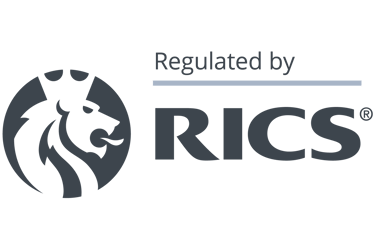How Much Does A RICS Home Survey Cost
Factors That Affect A Quote
There are a host of reasons why quotes vary. Whilst there are websites out there that will provide simplified answers based on the value of a property, you can read on here for detailed commentary based on my perspective…….
Causes for Fluctuating Quotes
Before we start it's important to acknowledge why you’re comparing prices. More often than not, it’s to make sure you know what to expect to avoid overpaying.
Essentially, the service of providing an RICS survey for any company will include a visual appraisal and report on the property. The quote will be based upon the following:
area, travel time, and advertised purchase price
size and condition of the property
type of home survey selected
turnover for the report
experience and branding of the company
level of aftercare
The quote can also vary due to additional services that the surveying company may provide such as:
drone survey
thermal imagery
valuation
So why does the base survey not include these? The above examples are more specialised fields and is above and beyond a visual inspection. For clarification, anything that can be picked up on an inspection with standard tools will be commented upon e.g. damp or structural cracks.
Elaborating on Factors for Fluctuations in Quotes
Area, travel and purchase price
Simply put, a property in London will cost more to inspect than a property in the North. Why? Supply and demand is the simplest and all-encompassing answer for any micro and macro factors.
Travel time and associated disbursements (parking charges) may be excluded from a quote and added on later once the job is completed.
Size and condition of the property
This is one of the largest deciding factors of the quote. The condition and size will directly translate to how much time and effort it will take to complete the survey. Note that all types of defects will be picked up during the inspection such as dampness or structural issues and there should be no need to instruct this separately unless recommended by the surveyor.
As an example, a mid terraced house built in 1990 and 90 sqm is typically quicker to inspect than a mid terrace Victorian property that’s similar in size. This is due to the methods of construction and materials adopted at the time and the type of issues commonly found. As such, the quote for the same level of Home Survey will vary for the property examples above.
Type of Home Survey
I’ve touched on what type of survey you should select and why in my book so I’ll briefly summarise this here as it's important to know what you’re selecting:
level 1 - for inspecting new build properties
lists issues in a simple format highlighting significant issues only
level 2 - for inspecting purpose built flats or smaller and recently built houses
cause and repair of issues noted along with consequences of not carrying out repairs
level 3 - for inspecting converted flats, older or larger houses, and those of unusual construction
cause, repair and consequences explained in more detail with possible list of costs and a more organised reporting format
Generally, the lower the level of the home survey, the less information you will get in the report (accepting all the reasons prices can fluctuate in this blog post).
Turnover for the report
Generally, the lower the Home Survey level, the quicker the report should be sent to you. A Level 1 and 2 survey may take between 4 and 7 days to complete. A Level 3 will take longer, typically 5 to 10 days. Note this is working days which do not include bank holidays and weekends.
Same day or one day turnaround services may be available for specific circumstances e.g. auction properties which attract a premium. This in my opinion is more to do with supply and demand again, as well as diverting time away from other jobs.
Experience and brand recognition
An experienced surveyor/company is more likely to charge a premium for the trust built with the public and price accordingly. The caveat to this might be if they are trying to win business due to larger overheads and therefore may price lower to beat competition.
Level of aftercare
Some surveyors/companies do not provide aftercare, or provide very little. Getting in contact with them after the job is complete can prove very difficult.
You want to be able to get in touch and have a discussion with your surveyor. You will most likely require clarification as the information is difficult to digest, and also for your own peace of mind to make sure you’ve interpreted everything correctly.
Action Points
When you’re selecting a surveyor, don’t simply go for the lowest, or even the highest quote. Make sure you’re comparing on a ‘like for like’ basis, as best as possible.
All RICS Home Surveys are required to provide a base level of service that includes for a visual inspection of building elements without removing/relocating belongings etc.
Factors that you may therefore wish to pay particular attention to when requesting a quote is:
The inclusion of aftercare
The experience of the Company/Surveyor
Clarify what will or wont be inspected
Check for any disbursements you may be liable for also.
The remaining factors are generally out of your hand once you’ve selected the property you want to buy.
Other Matters for consideration
Remember, the above relates to obtaining a quote for a survey. What you must also consider are services for a complete assessment of the property. Your budget should include costs for:
a conveyancer and additional searches and packs (between £350 to £1,500+)
relevant specialists and contractors (between £750 and £1,200+)
(Other costs to consider for purchasing your home include stamp duty, moving out/in and repairs which are a separate topic).
The cost for home surveys will generally sit within a £400 and £1,400 range
Subscribe to our newsletter
Stay up to date on new posts


